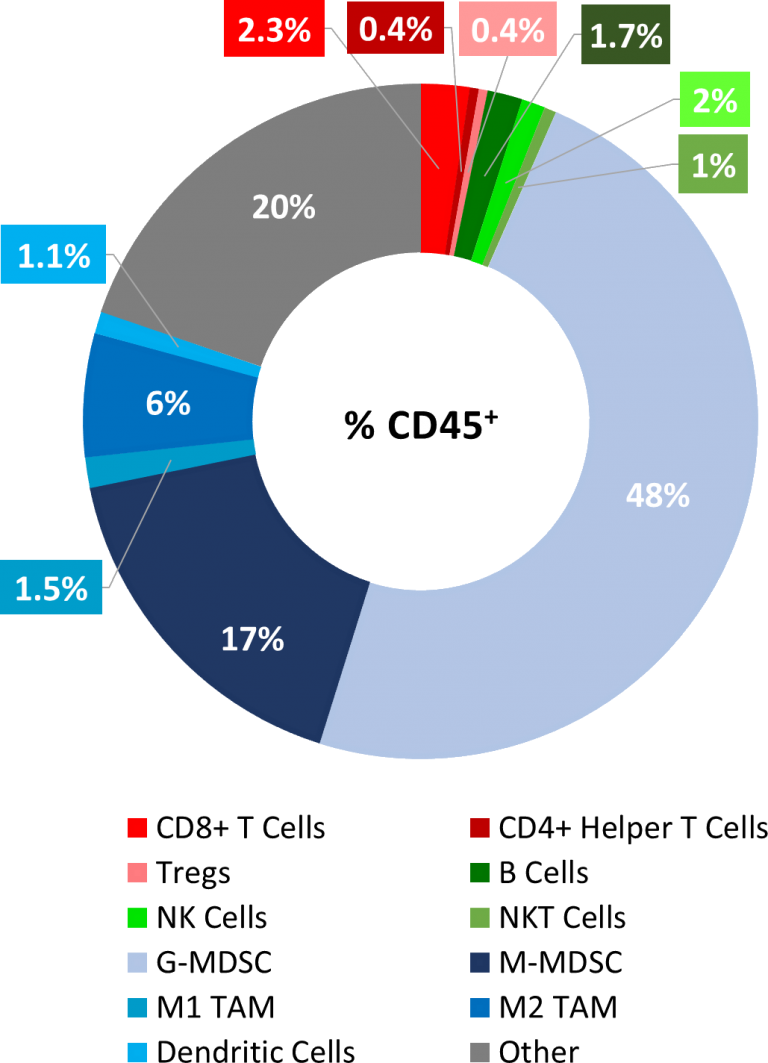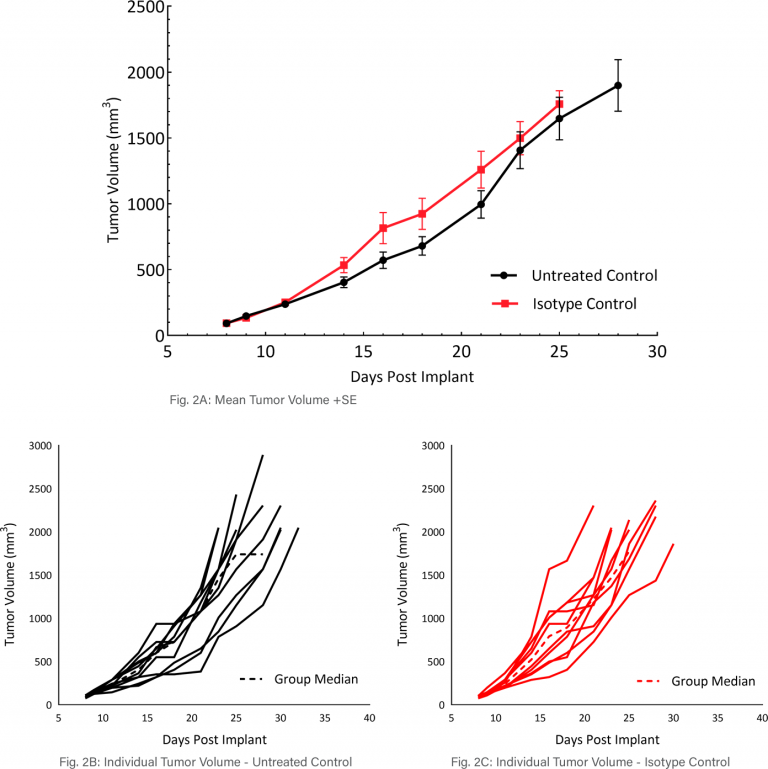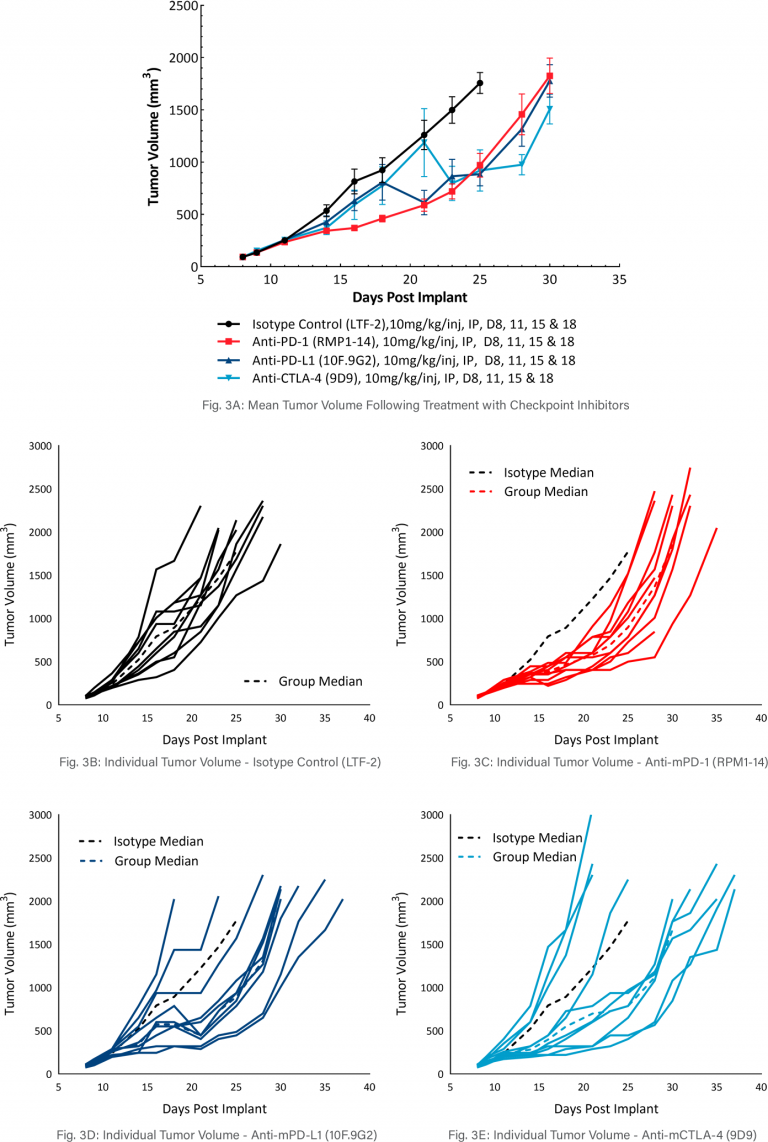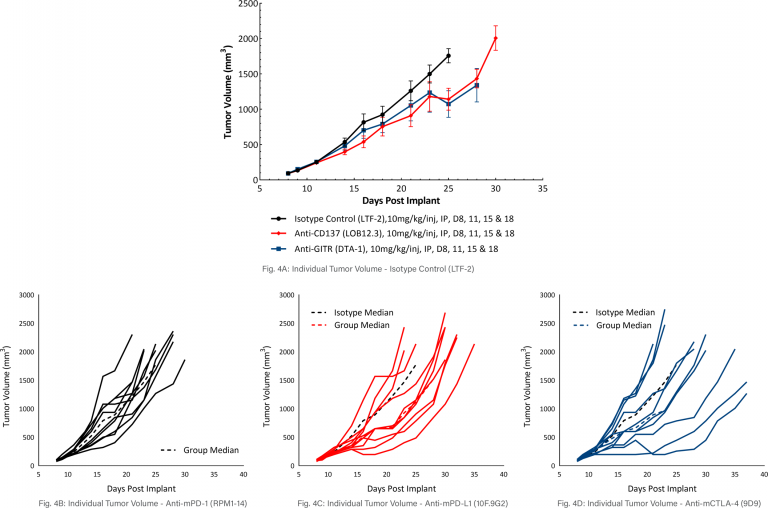Bladder cancer is one of the most frequent cancers of the urinary tract, accounting for about 80,000 new cases and 18,000 deaths in the United States in 2018, according to the National Cancer Society. Typically, patients with bladder cancer have limited surgical or treatment options. Traditional chemotherapeutics are ineffective, and surgery is often used to diagnose bladder cancer and to determine whether the cancer has spread into (invaded) the muscle layer of the bladder wall. When bladder cancer is invasive, all or part of the bladder may need to be removed, leaving the patient with long term adverse effects. In an effort to meet the need for advances in bladder cancer treatment, in 2018 the FDA accelerated the approvals for two checkpoint inhibitors, Keytruda and Tecentriq.
The steady growth, and interest in immunotherapy has required continual development and optimization of syngeneic mouse tumor models with desirable growth kinetics and response to immunomodulatory agents. One of these bladder cancer models, MB49, has been characterized by Labcorp to support development of these agents. MB49 cells (urothelial carcinoma) were derived from a C57BL/6 mouse following exposure of primary bladder cells to DMBA (7,12-dimethylbenz[a]anthracene) for 24 hours followed by culturing.[1]
MB49 Baseline Tumor Immune Profile
As described below, MB49 is considered to have a cold tumor phenotype with very low levels of CD8+ and CD4+ T cell infiltration (<3%) and significant presence of immunosuppressive myeloid populations (~65%), see Figure 1. The preliminary immunomodulatory treatment data shows mild responses, further supporting a cold tumor phenotype, and indicating that this model has the potential to respond to immune stimulants, perhaps best in combination with other agents. Thus, MB49 is well positioned to be a powerful immuno-oncology model with significant utility in drug development.






